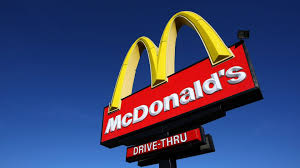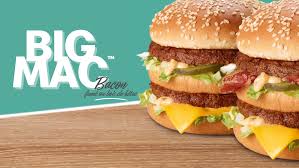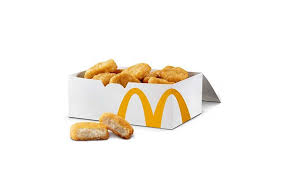Why Is McDonalds So Expensive? Get The Details Now!
Have You Ever Wondered Why Is McDonalds So Expensive? The fast-food giant has seen its menu prices increase significantly in recent years, and the reasons behind this surge are multifaceted. Factors such as persistent inflation, which has driven up the costs of ingredients and labour, have played a major role. Additionally, McDonald’s commitment to improving employee wages to attract and retain talent has further contributed to the overall cost of their meals.
The intricacies of their supply chain, characterized by specialized equipment and unique supplier contracts, also add to operational expenses. Alongside these challenges, consumer preferences for higher quality and diverse menu options have pushed the company to invest more in its offerings. While price increases can be frustrating for loyal customers, McDonald’s is working to balance these costs with value deals and promotions to maintain its appeal in a competitive market.
Table of Contents
Inflation’s Impact on Fast Food Prices

| Factor | Impact on Prices |
| Rising Raw Material Costs | Increased prices for ingredients (e.g., meat, bread, vegetables) leading to higher production costs for menu items like the Big Mac and Filet-O-Fish. |
| Packaging Costs | Inflation affects the cost of packaging materials, contributing to overall price increases. |
| Logistics Costs | Higher transportation expenses due to increased fuel prices result in higher costs for distribution and delivery. |
| Utilities Costs | Rising costs for electricity and water add to operational expenses, forcing McDonald’s to raise menu prices. |
| Supplier Charges | Suppliers passing on their increased costs leads to higher input prices for McDonald’s menu items. |
| Profit Margin Pressures | Each cost increase chips away at profit margins, necessitating price hikes to maintain profitability. |
Higher Wages for Employees
| Factor | Description |
| Reason for Wage Increase | To attract and retain a reliable workforce in a competitive labor market. |
| Commitment to Employee Well-being | Higher wages are part of McDonald’s broader strategy that includes better benefits and career advancement opportunities. |
| Impact on Operational Expenses | Increased wages lead to higher operational expenses for McDonald’s. |
| Passing Costs to Customers | Higher operational expenses often result in increased menu prices for customers. |
| Context of Labor Market | The wage increase is especially crucial due to a tight labor market where many industries compete for the same pool of workers. |
| Overall Effect on Pricing | The increase in wages contributes to the rising costs at McDonald’s, making it more expensive for consumers. |
Specialized Equipment and Supply Chain Costs
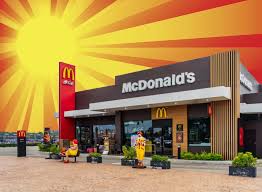
| Factors | Description | Impact on Pricing |
| Specialized Equipment | Unique machinery tailored for operations at each location. | High initial investment and maintenance costs increase overall pricing. |
| Supply Chain Complexity | A highly complex network involving exclusive contracts with suppliers to maintain consistent quality. | Premium prices for customized products raise costs. |
| Logistical Challenges | Issues related to moving ingredients and equipment, including fluctuating fuel prices, shipping fees, import tariffs, and global supply chain disruptions. | Increased transportation and logistics costs contribute to higher menu prices. |
| Maintenance Costs | Frequent maintenance required for specialized machinery can lead to ongoing expenses. | Continuous expenses add to operational costs, influencing menu prices. |
| Global Economic Factors | Variability in fuel prices and trade tariffs can further complicate the supply chain. | Increased costs from economic fluctuations affect final pricing. |
Consumer Preferences and Upgraded Menus
| Aspect | Details |
| Consumer Preferences | Evolving demand for healthier, fresher, and higher-quality ingredients. |
| Menu Upgrades | Introduction of salads, fruit options, and premium sandwiches. |
| Flavor Diversity | Addition of items like the Spicy McChicken and international menu favorites to cater to diverse tastes and global cuisines. |
| Ingredient Quality | Requirement for more specialized and costlier ingredients to meet consumer demand for higher-quality food options. |
| Customer Experience | Focus on enhancing the overall dining experience through store renovations and the addition of digital kiosks. |
| Customer Satisfaction | Improved store interiors and digital ordering systems contribute to greater customer satisfaction. |
| Cost Implications | Upgrading menu and services leads to increased expenses, resulting in higher menu prices. |
| Alignment with Trends | Transitioning to a more premium offering aligns with modern consumer expectations, driving up the cost of dining at McDonald’s. |
Location-Specific Pricing Variability
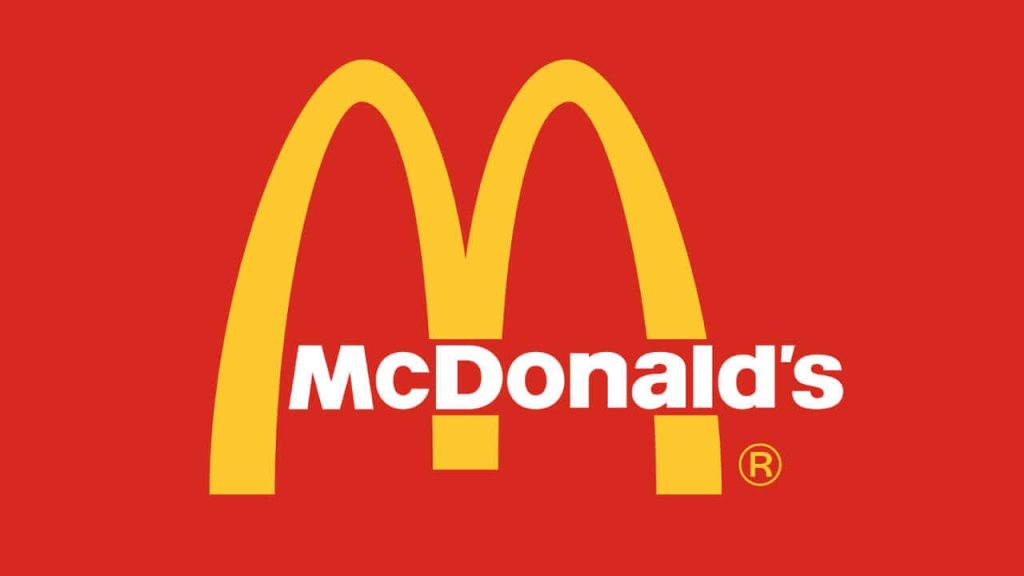
Location-specific pricing variability is a significant factor in McDonald’s menu costs. Different regions have varying operational expenses, which include rent, utilities, and local taxes. For instance, a McDonald’s in New York City faces higher rent and property taxes compared to one in a small town. Franchise owners also can adjust prices based on local economic growth. In affluent areas, customers might see higher prices due to the higher cost of living.
Conversely, in rural areas, prices may be lower to remain competitive. This variability ensures each franchise can cover its unique costs while staying profitable. Additionally, regional supply chain logistics can influence prices. Transporting ingredients to remote locations can be more costly, impacting the final price. These regional differences contribute to the overall variability in McDonald’s pricing.
The Role of Record-High Food Costs
Record-high food costs have significantly impacted McDonald’s menu prices. As global demand for staples like beef, chicken, and potatoes has surged, so have the prices. Additionally, extreme weather conditions have affected crop yields, leading to shortages and higher costs. Supply chain disruptions, exacerbated by the pandemic, have further strained availability and pricing. Increased feed prices for livestock also push up the cost of meat products.
Moreover, import tariffs on essential ingredients have compounded these issues, driving higher costs. These rising expenses hit fast-food chains hard, making it challenging to stabilise prices. Like other restaurants, McDonald’s has little choice but to pass these costs onto consumers. As a result, the price of your favourite items, from burgers to fries, continues to climb.
Maintaining and Repairing Specialized Equipment
Maintaining and repairing specialized equipment at McDonald’s is a significant expense. Transitioning from standard to customized machinery requires specific expertise. Regular upkeep is essential to ensure smooth operations and avoid breakdowns. This includes routine inspections, cleaning, and timely part replacements. When equipment fails, repair costs can skyrocket, especially requiring specialized technicians.
Additionally, downtime during repairs can lead to lost sales, compounding the financial impact. Supply chain disruptions also affect the availability of replacement parts, often leading to higher costs. The complexity of the equipment necessitates a dedicated budget for maintenance. Ensuring each machine operates efficiently is crucial for maintaining service speed and quality. These ongoing maintenance efforts contribute significantly to the overall operational costs.
Value Deals and Promotions

| Strategy | Description |
| Value Deals | Consistently offers budget-friendly options like the $5 Meal Deal, ensuring taste is not sacrificed. |
| Limited-Time Offers | Runs promotions on unique items at discounted prices, enticing customers to try new products. |
| Digital Coupons | Provides savings through coupons available via the McDonald’s app, enhancing cost-effectiveness. |
| Rewards Programs | Allows frequent diners to earn points redeemable for free menu items, rewarding loyalty. |
| Bundle Deals | Offers variety at a lower cost through promotions like McPick 2, allowing customers to choose multiple items. |
| Seasonal Promotions | Aligns promotions with holidays and events, creating timely incentives for customers to visit. |
| Affordability Focus | Ensures that despite higher menu prices, customers can still enjoy their favorite items at reasonable costs. |
Comparing McDonald’s to Other Fast Food Chains
| Fast Food Chain | Signature Item | Typical Price Range | Price Comparison | Key Features |
| McDonald’s | Big Mac | $3.99 – $5.99 | Mid-range; competitive with similar items. | Iconic menu, global presence, focus on consistency. |
| Burger King | Whopper | $3.49 – $5.69 | Often cheaper than Big Mac, varies by location. | Flame-grilled burgers, larger portion sizes. |
| Wendy’s | Dave’s Single | $4.79 – $6.29 | Value menu may undercut McDonald’s prices. | Fresh ingredients, square patties, value offerings. |
| Taco Bell | Crunchy Taco | $1.29 – $3.49 | Generally lower-priced options; attracts budget-conscious customers. | Diverse menu, value-driven items, customizable orders. |
| Chick-fil-A | Chicken Sandwich | $3.29 – $5.99 | Higher prices justified by quality and service. | Focus on chicken products, customer service excellence. |
| Subway | 6-Inch Sub | $3.50 – $8.00 | Pricing varies based on ingredients and customizations. | Customizable sandwiches, health-conscious options. |
Future Price Trends at McDonald’s

Predicting future price trends at McDonald’s involves analyzing several dynamic factors. One key aspect is the global economic landscape. If inflation persists, food and labour costs will likely keep rising. Additionally, supply chain disruptions can continue to elevate expenses for raw materials and specialized equipment. Changes in consumer preferences will also play a role. Prices might follow suit if demand for premium ingredients and diverse menu options increases.
Technological advancements could mitigate some costs. Automated kitchens and digital ordering systems might reduce labour expenses. However, initial investments in new technologies could offset these savings. Environmental regulations may also impact future prices. As McDonald’s moves towards more sustainable practices, eco-friendly packaging and sourcing costs could be significant.
Ultimately, market competition will influence pricing strategies. If competitors lower their prices or offer better deals, McDonald’s may adjust its prices to remain competitive. Therefore, while prices may rise, McDonald’s will likely continue to seek a balance between cost and customer value.
Tips for Saving Money at McDonald’s
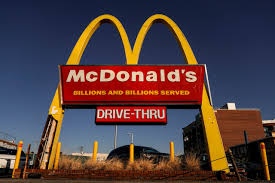
| Tip | Description |
| Use the Mobile App | Access exclusive deals, discounts, and coupons not available in-store. |
| Order from the Value Menu | Choose cheaper items to save money on your meal. |
| Try Combo Meals | Bundle favorites for a lower cost compared to ordering items separately. |
| Avoid Extras | Skip large fries or drinks to keep expenses down. |
| Join the Rewards Program | Earn points on every purchase and redeem them for free items to save money over time. |
| Look for Limited-Time Offers | Take advantage of promotional deals that often feature discounted prices. |
| Share Large Meals | Split the cost of larger meals with friends to save money. |
| Opt for Water Instead of Soda | Choose water to cut down on your bill and avoid extra costs. |
| Check for Regional Promotions | Look out for location-specific deals that may offer additional savings. |
| Follow on Social Media | Stay updated on upcoming deals and promotions by following McDonald’s on social media platforms. |
Frequently Asked Questions
Why have McDonald’s prices increased so much recently?
McDonald’s prices have increased due to inflation, higher wages, and specialized supply chain costs. These elements collectively contribute to the rising operational expenses reflected in the menu prices.
How does McDonald’s compare to other fast-food chains in terms of pricing?
McDonald’s prices vary but often exceed competitors like Wendy’s and Burger King. However, they balance this with value deals and promotions to remain competitive.
Are there still affordable options at McDonald’s?
Yes, McDonald’s offers value deals and promotions like the $5 Meal Deal and digital coupons. These options provide budget-friendly alternatives without compromising on taste and quality.
Will McDonald’s prices continue to rise?
Future price trends at McDonald’s will depend on ongoing economic factors like inflation and supply chain disruptions. However, McDonald’s aims to balance costs with customer value through promotions and deals.
Conclusion
Navigating the rising costs at McDonald’s can be a challenge for loyal customers. Despite inflation, higher wages, and specialized equipment driving up prices, McDonald’s remains committed to delivering value. Transitioning to meet evolving consumer preferences and upgrading their menu has added layers of expense.
Yet, the Golden Arches continues to roll out promotions and value deals, like the $5 Meal Deal, to offer budget-friendly options. Comparing prices across fast food chains reveals McDonald’s efforts to balance quality and affordability. They understand the importance of maintaining customer loyalty amidst rising costs. As economic factors evolve, future price trends may fluctuate, but McDonald’s aims to keep its offerings competitive. Keep an eye on their promotions to make the most of your visits.
